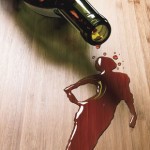 In his insightful book, “The Addictive Personality: Understanding the Addictive Process and Compulsive Behavior,” author Craig Nakken explains why, even after an addict has given up the bottle or the weed, she will never be done with recovery:
In his insightful book, “The Addictive Personality: Understanding the Addictive Process and Compulsive Behavior,” author Craig Nakken explains why, even after an addict has given up the bottle or the weed, she will never be done with recovery:
Addiction is a process of buying into false and empty promises: the false promise of relief, the false promise of emotional security, the false sense of fulfillment, and the false sense of intimacy with the world….Like any other major illness, addiction is an experience that changes people in permanent ways. That is why it’s so important that people in recovery attend Twelve Step and other self-help meetings on a regular basis; the addictive logic remains deep inside of them and looks for an opportunity to reassert itself in the same or in a different form.
Nakken brilliantly explains the addictive cycle that I merely call “the exploding head phenomenon”: the process by which I continually seek relief from uncomfortable feelings, a “nurturing through avoidance–an unnatural way of taking care of one’s emotional needs,” as he says. The addict, he clarifies, seeks serenity through a person, place, or thing. The cycle is made up of four steps:
- pain
- feeling the need to act out
- acting out and feeling better
- pain from acting out
Just in case you weren’t paying attention, he mentions pain twice.
It’s so simple it’s laughable, really. When you can draw your little neat diagram to see what’s going on. But when you’re in the midst of it, emotions take over and it’s about as easy as driving your car through a blizzard. On a back road.
With some addictions, there is a physiological component that further skews reality. And while I used to believe that once you were off of booze you were safe from the physiological drama within your limbic system (emotion center of the brain), now I believe that the high of hypomania and mania produces the same illusion of completeness or serenity as when you reached the perfect buzz. Which is why it’s so hard to come clean with your doctor so that you both can work hard at pulling you down from the high before you crash.
“Emotionally, addicts get intensity and intimacy mixed up,” Nakken writes.
During the trance created by acting out, addicts may feel very excited, very shameful, and very scared. Whatever they are feeling, they feel it intensely. Addicts feel very connected to the moment because of the intensity. Intensity, however, is not intimacy, though addicts repeatedly get them mixed up. The addict has an intense experience and believes it is a moment of intimacy.
I wish I had read that distinction about 20 years ago, because I’ve spent too many years confusing the two. Whether it be a work project, or a thrilling new friendship, or a media opportunity, I assumed that the trance state meant that it could complete me (as Jerry Maguire would say) at least take away all the restlessness I feel on a daily basis.
Nakken is right on when he says that it’s important for addicts to understand their propensity or yearning for trance-like states because, in some regards, we have to temper these urges our entire lives. Bottle or no bottle. “On some level,” Nakken explains, “the addict will always be searching for an object or some type of event with which to form an addictive relationship. On some level, this personality will always want to give the person the illusion that there is an object or event that can nurture him or her.”
So, great, then what do we do? According to Nakken, we need to turn to supportive, nurturing relationships in order to grow emotionally and spiritually. Like …
* Family and safe friendships. Nakken says we learn healthy interdependencies. I have trouble determining which friendships are safe for me, but for now, I’m just going to say those that don’t make me feel like my head is going to blow up.
* A Higher Power. The first three steps in most 12-step programs:
1. We admitted we were powerless over alcohol–that our lives had become unmanageable.
2. Came to believe that a Power greater than ourselves could restore us to sanity.
3. Made a decision to turn our will and our lives over to the care of God as we understood Him.
* Self. Now that’s more helpful for some people versus others. I feel like my “self” right now is a massive liability. But I do trust myself much more today than 20 years ago when I stopped drinking. Nakken writes: “Through a caring relationship with ourselves we learn self-nurturing–the ability to love ourselves and see ourselves as one resource we can turn to during times of difficulty.”
* Community. This one’s absolutely critical to me. Although I don’t frequent many 12-step groups today, I do swim with a fun group of people at 6 am and we laugh our way through our laps. I’m also very active in my parish and find that spiritual support vital to my recovery.
I love Nakken’s explanation of why we need these four kinds of relationships in our lives:
What all four types of relationships have in common is the fact that people must reach within themselves, but they must also reach out. In natural relationships there is a connecting with others–an act of giving and an act of receiving. In addiction there is only an act of taking. Natural relationships are based on emotionally connecting with others; addiction is based on emotional isolation.
* Click here to subscribe to Beyond Blue and click here to follow Therese on Twitter and click here to join Group Beyond Blue, a depression support group. Now stop clicking.

